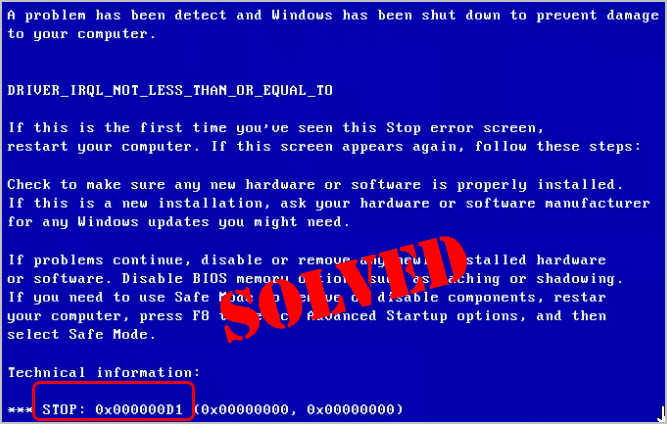
Are you getting 0x000000D1 blue screen error on your Windows computer? It could be super frustrating. There’s nothing scarier, in the Windows’s world. But don’t worry; You won’t be stuck with it forever. It’s usually simple to fix. Read on and find how…
Try these fixes:
- Update all your available driver to the latest version
- Check for memory problems
- Restore your system
Solution 1: Update all your available driver to the latest version
0x000000D1 translates to DRIVER_IRQL_NOT_LESS_OR_EQUAL, which means that a driver on your system has failed to access the memory. So you can update all the available driver on your computer to fix this issue, typically the video driver and network driver according many users’ report.
You can update your drivers through Device Manager to let Windows detect and install the update. But you need to verify all your drivers one by one manually.. If you’re not comfortable playing around with drivers manually, you can do it automatically with Driver Easy.
Driver Easy will automatically recognize your system and find the correct drivers for it. You don’t need to know exactly what system your computer is running, you don’t need to risk downloading and installing the wrong driver, and you don’t need to worry about making a mistake when installing.
You can update your drivers automatically with either the FREE or the Pro version of Driver Easy. But with the Pro version it takes just 2 clicks (and you get full support and a 30-day money back guarantee):
Download and install Driver Easy.
Run Driver Easy and click Scan Now. Driver Easy will then scan your computer and detect any problem drivers.

Click Update All to automatically download and install the correct version of all the drivers that are missing or out of date on your system (this requires the Pro version – you’ll be prompted to upgrade when you click Update All).
Note: You can do it for free if you like, but it’s partly manual.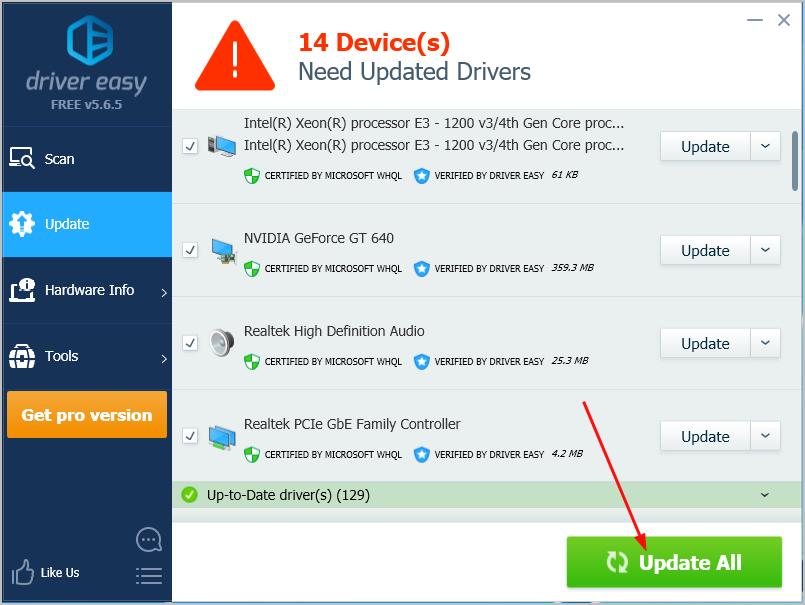
Restart your computer to see if the error disappear. If yes, so great! If you still see the error, don’t give up hope, you have something else to try…
Solution 2: Check for memory problems
A bad memory module may also cause this problem. You can run the built-in Memory Diagnostics tool to check if your computer has memory problems.
Here’s how you can do it:
On your keyboard, press the Windows logo key and press R to bring up the Run box.
Type mdsched.exe and press Enter to run the tool.

Click Restart now and check for problems.
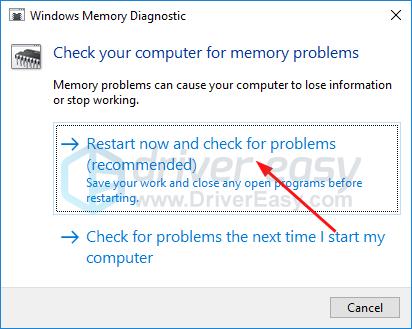
Windows should then automatically check for memory problems once your computer restarts.
As soon as Windows completes the process, your computer will restart again. Check if the blue screen error disappears.
Solutions 3: Restore your system
This problem could be also due to the recent changes to your computer, like a newly-installed software. If this is the case, you can restore your system to a previous working state.
See how to do it:
On your keyboard, press the Windows logo key and press R to bring up the Run box.
Type rstrui.exe and press Enter.
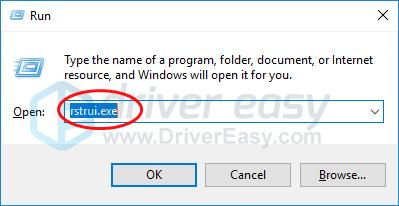
Click Next to restore your system to the recommended previous state. Or you can select Choose a different restore point to view more restore points.
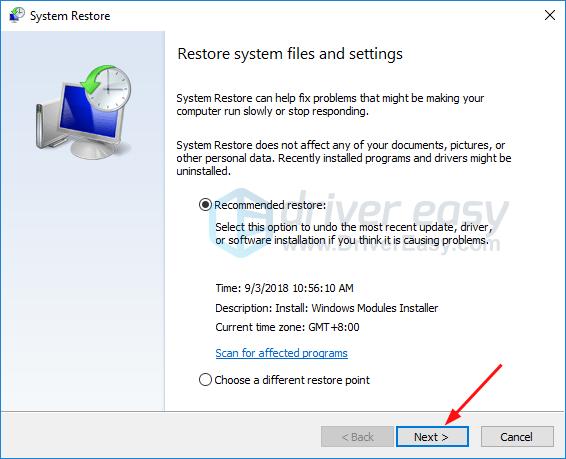
Follow the the on-screen instructions to complete system restore.
Hopefully this helps. Feel free to comment below with your own experiences.





